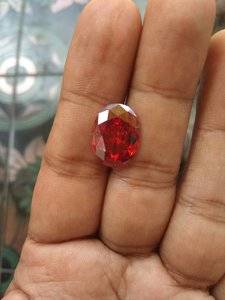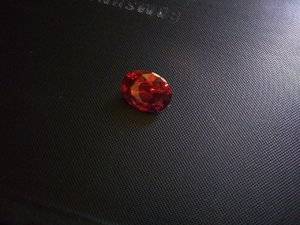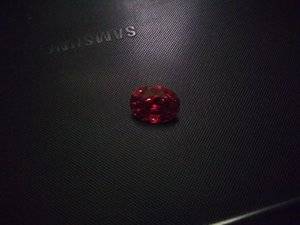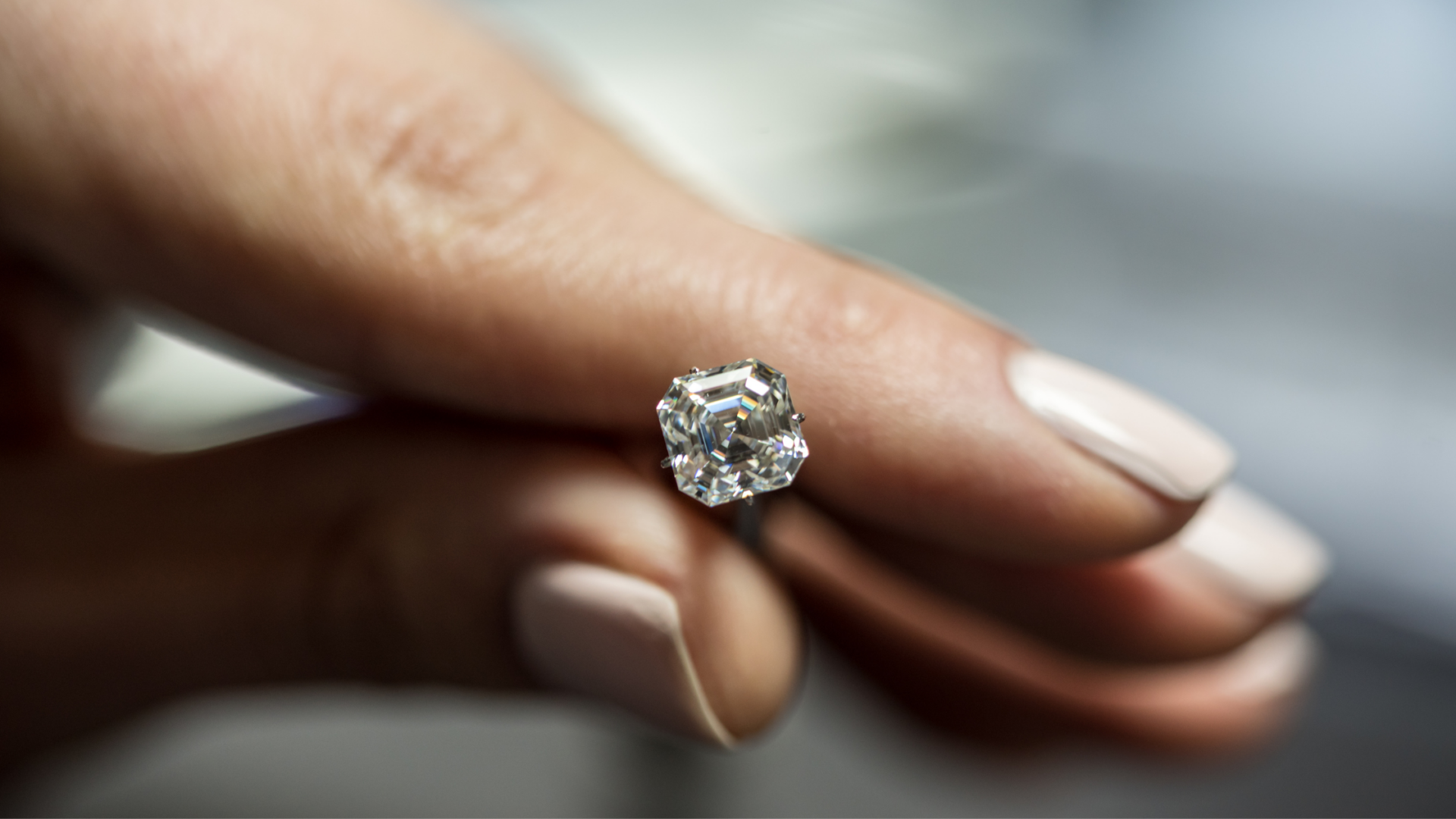You are using an out of date browser. It may not display this or other websites correctly.
You should upgrade or use an alternative browser.
You should upgrade or use an alternative browser.
Melted near boiling point ruby
- Thread starter Firman
- Start date
paperunicorn
Shiny_Rock
- Joined
- Dec 10, 2018
- Messages
- 111
My understanding is that as long as it was mined from the earth, rather than grown in a lab, it will remain a "natural" ruby, it's just necessary to disclose that it was heat treated.
- Joined
- Jan 22, 2014
- Messages
- 6,557
Ruby mined from the earth are natural. Rubies grown in a laboratory are man made.
If your ruby, from the ground, has been heated - it is heat treated. If it was heated with Beryllium it is heated and BE treated. If it was heated with flux to seal any cavities or cracks, it’s is “glass filled”.
Ruby are usually heat treated to improve clarity (dissolve silk) and this is an acceptable treatment for a natural ruby but high heat with additives to improve colour and/or materials to fill in fissures or cracks is considered unacceptable and the ruby called “enhanced or composite”.
Apart from origin, colour and carat weight an unheated untreated ruby is obviously worth the most and the price goes down with just heat but if it’s it Beryllium treated or fissure filled the value is mere dollars regardless of colour, size or origin.
Buyer today require reputable lab certificates before buying any expensive ruby because while a natural, unheated ruby might be $3,000 to $10,000 per carat, a invasively treated ruby is worth like $10.
If you want your gem valued, you should first obtain a lab report that details treatments and then seek out an appraiser,
If your ruby, from the ground, has been heated - it is heat treated. If it was heated with Beryllium it is heated and BE treated. If it was heated with flux to seal any cavities or cracks, it’s is “glass filled”.
Ruby are usually heat treated to improve clarity (dissolve silk) and this is an acceptable treatment for a natural ruby but high heat with additives to improve colour and/or materials to fill in fissures or cracks is considered unacceptable and the ruby called “enhanced or composite”.
Apart from origin, colour and carat weight an unheated untreated ruby is obviously worth the most and the price goes down with just heat but if it’s it Beryllium treated or fissure filled the value is mere dollars regardless of colour, size or origin.
Buyer today require reputable lab certificates before buying any expensive ruby because while a natural, unheated ruby might be $3,000 to $10,000 per carat, a invasively treated ruby is worth like $10.
If you want your gem valued, you should first obtain a lab report that details treatments and then seek out an appraiser,
Wow $3000 oh may god. Truely there is nothing additional enhancer of this Ruby. Just heat and repeat heat near boiling point.Ruby mined from the earth are natural. Rubies grown in a laboratory are man made.
If your ruby, from the ground, has been heated - it is heat treated. If it was heated with Beryllium it is heated and BE treated. If it was heated with flux to seal any cavities or cracks, it’s is “glass filled”.
Ruby are usually heat treated to improve clarity (dissolve silk) and this is an acceptable treatment for a natural ruby but high heat with additives to improve colour and/or materials to fill in fissures or cracks is considered unacceptable and the ruby called “enhanced or composite”.
Apart from origin, colour and carat weight an unheated untreated ruby is obviously worth the most and the price goes down with just heat but if it’s it Beryllium treated or fissure filled the value is mere dollars regardless of colour, size or origin.
Buyer today require reputable lab certificates before buying any expensive ruby because while a natural, unheated ruby might be $3,000 to $10,000 per carat, a invasively treated ruby is worth like $10.
If you want your gem valued, you should first obtain a lab report that details treatments and then seek out an appraiser,
Where i should lab it. There is no Indonesian lab give it natural. Always synthetic because no inclusion at all at 120x magnifier
- Joined
- Apr 22, 2004
- Messages
- 38,364
High heat is 1300C
Ruby is reconstituted at 2000C
Heating to 3000C sounds very extreme and might be classified as synthetic or reconstituted. I highly doubt any lab will consider this ruby as natural due to the extreme treatment.
You might find this an interesting read
https://www.jckonline.com/magazine-article/reconstituted-reconstructed-recrystallized-regrown-again/
Ruby is reconstituted at 2000C
Heating to 3000C sounds very extreme and might be classified as synthetic or reconstituted. I highly doubt any lab will consider this ruby as natural due to the extreme treatment.
You might find this an interesting read
https://www.jckonline.com/magazine-article/reconstituted-reconstructed-recrystallized-regrown-again/
- Joined
- Dec 18, 2014
- Messages
- 1,653
Sounds either like clarity enhancement to fill the fishers with disolved ruby (flux) which is technically considered synrhetic once it recrystalizes, or reconstituted where they can melt down a bunch of smaller fragments to get a stone. Either way it severely impacts the price -- you need to send it to a reputable lab if you're not sure and want a more informed opinion, but it may turn out not to be worth very much.
- Joined
- Sep 20, 2008
- Messages
- 25,212
Interesting luster for a ruby. Looks more like a spinel or a garnet. It really needs a reputable lab report. Also, even though it’s a reddish gem, it’s a brownish red, and it may not fluoresce. In natural rubies, color is the most important aspect. Clarity is of no consequence if the color isn’t higher quality.
- Joined
- Sep 20, 2008
- Messages
- 25,212
Interesting luster for a ruby. Looks more like a spinel or a garnet. It really needs a reputable lab report. Also, even though it’s a reddish gem, it’s a brownish red, and it may not fluoresce. In natural rubies, color is the most important aspect. Clarity is of no consequence if the color isn’t higher quality.
- Joined
- Jan 22, 2014
- Messages
- 6,557
Are you sure it is ruby? It seems an unusual orange/ brown underlying tint. And why was the stone heated to so high? You say to “near boiling point”,
What was wrong with the gem before that made it needing such high heat?
The type of accepted heating is “low heat” and it is just for dissolving the rutile or silk inclusions that can make a gem look translucent.
A natural ruby, even high heat treated should still have some microscopic evidence of being a natural ruby. A lab ruby, one that is grown artificially, has certain different characteristics ie gas bubbles or curved striae and a total lack of other crystals to that of natural rubies have.
More advanced lab testing can detect if the gem has the correct trace elements or not.
These days lab grown rubies are incredibly sophisticated because people are trying to make or sell gems as natural rubies because they are worth so much money. This is why people buying rubies only accept the top lab reports, they don’t want to be tricked into paying $5,000 for a $10 gem. I don’t know where you are but the GIA has offices in many countries and Lotus Gemology is in Thailand. You might have to send it away to get a proper lab report if you want to sell it.
What was wrong with the gem before that made it needing such high heat?
The type of accepted heating is “low heat” and it is just for dissolving the rutile or silk inclusions that can make a gem look translucent.
A natural ruby, even high heat treated should still have some microscopic evidence of being a natural ruby. A lab ruby, one that is grown artificially, has certain different characteristics ie gas bubbles or curved striae and a total lack of other crystals to that of natural rubies have.
More advanced lab testing can detect if the gem has the correct trace elements or not.
These days lab grown rubies are incredibly sophisticated because people are trying to make or sell gems as natural rubies because they are worth so much money. This is why people buying rubies only accept the top lab reports, they don’t want to be tricked into paying $5,000 for a $10 gem. I don’t know where you are but the GIA has offices in many countries and Lotus Gemology is in Thailand. You might have to send it away to get a proper lab report if you want to sell it.
- Joined
- Sep 25, 2008
- Messages
- 2,936
Honestly this looks like crushed garnet dust heated until it literally dissolves and can be formed into a new "ruby" stone. I've seen this sort of thing on sale in the middle east. They kept insisting it was natural because the ingredients were natural rather than the formation... 
- Joined
- Jan 16, 2015
- Messages
- 96
There are different forms of heating. Also Low heat, where rutil is still there after heating. So at first sight the stone is untreated but has undergone heating to improve. So in my opinion low heat or heat is accepted, when nothing else is added to the the stone (glas, beryllium...).
Yes it is a kind of treatment, but mostly accepted in the trade.
Yes it is a kind of treatment, but mostly accepted in the trade.
- Joined
- Jan 22, 2014
- Messages
- 6,557
Reading up a bit more via GIA, high heat treatment over 1800C is usually done to Vermeil grown corundum ie Lab created rubies and sapphires for the purpose of eliminating the “tell tale” curved striea and to even colour distribution. However it doesn’t alter the chemical composition of the gem so if a lab was to detect high heat treatment, and in the absence of attributes to suggest either natural or man made, they can run a chemical analysis.
While natural ruby is Al2 O3 Cr as is lab grown ruby, chemical analysis via x ray fluorescence spectrometry will reveal the minute trace elements in the gem being tested. There are some trace elements that are only found in natural rubies and also other trace elements found in lab grown rubies.
So while a man made ruby can be subject to a number of different and highly sophisticated treatments to make it more like a natural, earth mined ruby, detailed chemical analysis will still tell the truth.
While natural ruby is Al2 O3 Cr as is lab grown ruby, chemical analysis via x ray fluorescence spectrometry will reveal the minute trace elements in the gem being tested. There are some trace elements that are only found in natural rubies and also other trace elements found in lab grown rubies.
So while a man made ruby can be subject to a number of different and highly sophisticated treatments to make it more like a natural, earth mined ruby, detailed chemical analysis will still tell the truth.
- Joined
- Apr 4, 2018
- Messages
- 75
I didnt add any impurity at all. Just raw ruby. Thats why i said natural.High heat is 1300C
Ruby is reconstituted at 2000C
Heating to 3000C sounds very extreme and might be classified as synthetic or reconstituted. I highly doubt any lab will consider this ruby as natural due to the extreme treatment.
You might find this an interesting read
https://www.jckonline.com/magazine-article/reconstituted-reconstructed-recrystallized-regrown-again/
Trust me. It's truely melted raw ruby. Nothing add to it. Thats is why i'm asking the opinion.Are you sure it is ruby? It seems an unusual orange/ brown underlying tint. And why was the stone heated to so high? You say to “near boiling point”,
What was wrong with the gem before that made it needing such high heat?
The type of accepted heating is “low heat” and it is just for dissolving the rutile or silk inclusions that can make a gem look translucent.
A natural ruby, even high heat treated should still have some microscopic evidence of being a natural ruby. A lab ruby, one that is grown artificially, has certain different characteristics ie gas bubbles or curved striae and a total lack of other crystals to that of natural rubies have.
More advanced lab testing can detect if the gem has the correct trace elements or not.
These days lab grown rubies are incredibly sophisticated because people are trying to make or sell gems as natural rubies because they are worth so much money. This is why people buying rubies only accept the top lab reports, they don’t want to be tricked into paying $5,000 for a $10 gem. I don’t know where you are but the GIA has offices in many countries and Lotus Gemology is in Thailand. You might have to send it away to get a proper lab report if you want to sell it.
It will show orange and yellow spark sir. Its tanzanian red orange ruby that Indonesian people love it. In Indonesia it called padparadscha but Ruby not sapphire.Why no photos of stone on a white background?
- Joined
- Jan 22, 2014
- Messages
- 6,557
Ok, so am I understanding this correctly, you actually turned natural ruby pieces ? into a “molten state” to create a new crystal?
If that’s the case, it would classify as “man made ruby” not natural.
Natural refers to the state of the gem crystal ie you dig the ruby crystal out of the ground, you facet it into a gemstone shape and that’s a “natural” ruby.
Any process that involves “creating” a crystal or material that you then facet into a gemstone shape whether from pieces of natural ruby or a mixture of Alunimum Oxide with Chromium, that’s “man made”.
If that’s the case, it would classify as “man made ruby” not natural.
Natural refers to the state of the gem crystal ie you dig the ruby crystal out of the ground, you facet it into a gemstone shape and that’s a “natural” ruby.
Any process that involves “creating” a crystal or material that you then facet into a gemstone shape whether from pieces of natural ruby or a mixture of Alunimum Oxide with Chromium, that’s “man made”.
So there is no point i lab it. It will Deportes man made rubyOk, so am I understanding this correctly, you actually turned natural ruby pieces ? into a “molten state” to create a new crystal?
If that’s the case, it would classify as “man made ruby” not natural.
Natural refers to the state of the gem crystal ie you dig the ruby crystal out of the ground, you facet it into a gemstone shape and that’s a “natural” ruby.
Any process that involves “creating” a crystal or material that you then facet into a gemstone shape whether from pieces of natural ruby or a mixture of Alunimum Oxide with Chromium, that’s “man made”.
Im not getting it cheap. Do you now high temperature sintering furnance. You can buy rough and melted your self. It just if $50 per carat at least 1000 carat or better i sell it blok. 5kg per block. I don't know.Sounds like a type of synthetic ruby I’ve seen before. They were going for like $50/carat. So if you are getting it cheap and don’t mind it for what it is, that’s fine. Otherwise I will stay far away.
I am not sure if it is technologically possible to melt a ruby and reconstruct it into a new stone. However, if the specimen you have are inclusion free under 120x microscope, you must patent it! Technically speaking your stone is a great candidate for replacing diamond (with high N) in quantum computer. You will make billions instead of a few thousand dollar
Do not make me high. It took a month to create it. It just if i had 100K USD. It will be enough to create 5-10kg of it. This one i rent the furnance (small and extremely dangerous). I want to buy the furnance my self even it's not save. Truely high voltage .I am not sure if it is technologically possible to melt a ruby and reconstruct it into a new stone. However, if the specimen you have are inclusion free under 120x microscope, you must patent it! Technically speaking your stone is a great candidate for replacing diamond (with high N) in quantum computer. You will make billions instead of a few thousand dollar
- Joined
- Apr 22, 2004
- Messages
- 38,364
Synthetic corundum is still corundum. You’ve rebuilt the stone from its natural crystalline structure into something completely unnatural. Since you are unconvinced, please submit it to AGL, GIA, SSEF and the like for confirmation.
- Joined
- Jan 22, 2014
- Messages
- 6,557
Diamonds and Corrundum have completely different chemical composition.I am not sure if it is technologically possible to melt a ruby and reconstruct it into a new stone. However, if the specimen you have are inclusion free under 120x microscope, you must patent it! Technically speaking your stone is a great candidate for replacing diamond (with high N) in quantum computer. You will make billions instead of a few thousand dollar
You can’t exchange Diamond (C ) for Corrundum (Al2O3 with Cr) in a quantum computer because the whole theory relies on type of impurity only found in diamonds called an N V centre.
This is where a nitrogen atom takes the place of one carbon atom. This means an unpaired electron circulates around the nitrogen vacancy centre. This electron can be excited or polarized by a laser.
A ruby has no carbon component so can’t be used in Quantam computers.
Synthetic Corrundum is already produced in enormous quantities (tonnes and tonnes) for cents a kilo for various applications. Someone taking crushed up pieces of natural ruby and melting them down isn’t creating anything unique or of value or use.
Natural ruby, as in what is extracted from the ground in its original crystal structure, is very rare. It is valuable because it is so very rare and accordingly desirable as a gemstone.
Manufactured ruby whether by mass production of Aluminum Oxide with Chromium or someone melting crushed ruby pieces is man made ruby and is very very common and worth mere cents.
- Joined
- Jan 22, 2014
- Messages
- 6,557
Yes still Corrundum but “man made”.By the way it's not new stone. Still corundum
Natural Rubies and sapphires, as gemstones, are worth so much money because they are very rare. Value of any item is driven by two factors - rarity (availability) and corresponding desirability (which is increased because of rarity).
Natural rubies from the ground with good colour and good clarity are very rare, they are hard to find and very desirable. This is why they are worth so much money - to people who want to own a rare, hard to find, from the earth ruby crystal.
Man made rubies, whether by your method or Flux grown or Flame fusion, are chemically the same as natural rubies and look the same as natural rubies, they are virtually flawless and can come in a range of different hues BUT they are not at all rare, they makes thousands of tonnes every year, and thus not desirable.
From a business perspective - who would want to buy your created rubies?
People who pay $3,000 plus a carat only pay that for natural, from the earth WITH a lab report that confirms a natural origin.
People who want the ruby look and durability buy man made rubies off eBay for 99 cents with free shipping.
Did You Miss the March 2024 Jewels of the Weeks?
Did You Miss the March 2024 Jewels of the Weeks? - 03/30
Did You Miss the Throwback Thursdays for March 2024?
Did You Miss the Throwback Thursdays for March 2024? - 03/28







300x240.png)